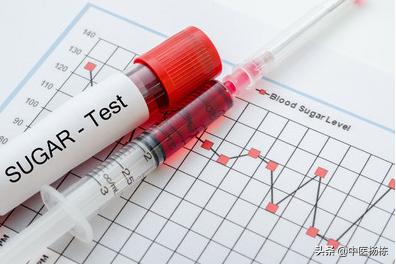What is blood sugar? What are the sources and destinations of blood sugar?
What is blood sugar? What are the sources and destinations of blood sugar?
Blood sugar as the name suggests is the glucose component inside the blood, one of the main energy substances that sustains life, the remaining 2 are fats and proteins, so let's talk about where he's coming from and where he's going!
the way one comes
The main sources of glucose in the blood are food sources and release from own reserves
First to the way:The food we eat every day passes through the oropharynx, undergoes initial digestion by saliva, then to the full grinding of the stomach, together with the digestion of gastric juice, and finally enters the small intestine to be absorbed into the blood. Sugar in food eventually participates in blood circulation in the form of glucose.
The second way:After food is digested and absorbed, if there is excess sugar, fat or protein, it will be converted into glycogen through the liver and stored in the body for emergency use. For example, when a large amount of energy is needed during strenuous exercise, there is not enough glucose in the blood to supply the body for digestion, and at this time the regulating system will direct the liver to break down the glycogen into glucose and participate in the energy supply.
the way one is following
There are also 2 ways, the first is direct consumption, food digestion with glucose into the blood, the blood reaches the energy factory, in the cells and catalysts directly into energy, to ensure the normal functioning of organs, cells. So the first way to go is to participate in the synthesis and release of energy in the body!
The second way is that excess glucose, through a special chemical reaction, is eventually converted into glycogen, fat, and protein stored under the skin for use!

If it helps you, can everyone click a follow! Thanks!
Here's what I think about this question, a person's life exists on the flow of blood throughout the body. So what nutrients does the blood rely on to support it? The main factor is glucose referred to as blood glucose, diabetic blood glucose control has been in the fasting 8 or more, which is the diabetic whole body soaked in sugar water (referred to as blood glucose), so what is the source of blood glucose (glucose)? People eat staple foods, rice, steamed bread, sugar, millet, corn, these five people eat down after digestion through the gastrointestinal tract by the human body after the breakdown of insulin cells into glucose for the body to absorb, there are two kinds of fruits into glucose, watermelon, dragon fruit, vegetables, there are three kinds of starch into glucose, potatoes, potatoes, taro, taro. Staple food is the main source of glucose, diabetics must eat staple food, rice, steamed bread, eat 3 two to 4 two per day. Then the human body has produced glucose, glucose is the way to go to supply the body's various organs of the five viscera and six lungs organs of nutrition, brain cells need glucose, people every day to move the brain to consume a lot of people, people with great strength, the internal force is sufficient to rely on the human body glucose in the role. Why do people get diabetes? Is the human body insulin cells to break down glucose resistance, can not break down sugar into the blood which is elevated blood sugar. Diabetes arises. The above preliminary analysis of the conclusion.
Blood sugar is glucose, derived from direct intake of sugar, staples and other foods, and also synthesized through gluconeogenesis, which can be utilized by expending energy.
The glucose in the blood is called blood sugar. The concentration of blood sugar in the body is an important indicator of sugar metabolism in the body. Under normal circumstances, blood sugar concentration is relatively constant. In normal people, fasting plasma glucose concentration is 3.9-6.1mmol/L (glucose oxidase method). A fasting plasma glucose concentration above 7.0 mmol/L is called hyperglycemia and below 3.9 mmol/L is called hypoglycemia. To maintain a relatively constant blood glucose concentration, it is necessary to maintain a dynamic balance between the sources and destinations of blood glucose.
Sources of blood sugar:
① Sugar from food is the main source of blood sugar;
② Hepatic glycogenolysis is a direct source of blood glucose during fasting;
(iii) Non-sugar substances such as glycerol, lactic acid, and gluconeogenic amino acids produce glucose through gluconeogenesis, which serves as a source of blood sugar during prolonged starvation.
Blood Sugar's Way to Go:
①Oxidation and decomposition in various tissues provide energy, which is the main destination of blood glucose;
② Glycogen synthesis in tissues such as liver and muscle;
(iii) Transformation into other sugars and their derivatives, such as ribose, aminosugar and glucuronic acid;
④ Transformation into non-sugar substances such as fats and non-essential amino acids;
⑤ When blood glucose concentration is too high, it is excreted by urine. A blood glucose concentration greater than 8.88 to 9.99 mmol/L exceeds the reabsorption capacity of the renal tubules and diabetes occurs. The blood glucose concentration at which diabetes occurs is referred to as the renal glucose threshold. Glycosuria occurs in pathological conditions and is commonly seen in patients with diabetes mellitus.
The sugar in the blood serum is called blood sugar, and in the vast majority of cases it is glucose. Most of the energy needed for cellular activity in the body's tissues comes from glucose, so blood sugar must be maintained at a certain level to sustain the needs of the body's organs and tissues. Normal people in the early morning fasting blood glucose concentration of 80 ~ 120 mg%. A fasting blood glucose concentration of more than 130 mg% is called hyperglycemia. If the blood glucose concentration exceeds 160~180 mg%, some of the glucose is excreted in the urine, which is called glycosuria. A blood glucose concentration of less than 70 mg% is called hypoglycemia.
There are sources of blood sugar:
One, mainly from the sugar contained in food.
Second, blood glucose during fasting can come directly from the breakdown of hepatic glycogen.
Third, there is the production of glucose from non-sugar substances via the gluconeogenesis pathway, a condition that is the source of blood glucose during prolonged starvation.
The blood sugar goes by there:
One that oxidizes and decomposes energy production capacity primarily in the tissues.
Two, in the liver and muscle tissue to synthesize glycogen.
Three, transformation into non-sugar substances, such as fats, non-essential amino acids, and so on.
Four, converted to other sugars and their derivatives, such as ribose, aminosugar, and so on.
Fifth, a blood glucose concentration that exceeds 8.88 to 9.99 mmol per liter will exceed the reabsorption capacity of the renal tubules and will be excreted in the urine and is called diabetes. The blood glucose concentration at which diabetes occurs is also the renal threshold, and diabetes is detected in normal people after eating large amounts of sugar as well as when they have diabetes.
What we often call blood glucose is the composition of glucose in the blood, glucose is a very key source of kinetic energy in the body, we usually in the case of activities, especially in the case of excessive exercise, the body needs to consume a lot of kinetic energy, so the glucose in the blood will continue to be consumed, and then can be based on the diet and its fat burning and other methods to replenish the value of blood glucose, the following is an introduction to the blood glucose what is it? What are the sources and routes of blood glucose?

What's blood sugar?
The glucose contained in the blood is called blood sugar. It is the transport form of sugar in the body. Blood glucose can be measured by glucose oxidase method, o-toluidine method and Folin-Wu method, and the first two methods are mostly used in China. Folin-Wu method has been eliminated. Normal human fasting plasma glucose is 3.9-6.1mmol/l (glucose oxidase method).
The ability of blood glucose concentration to remain relatively constant is a result of the ability to maintain a dynamic balance between its sources and destinations.

Sources of blood sugar:
① Sugar from food is the main source of blood sugar; and
② Liver glycogenolysis is the direct source of blood glucose during fasting; and
(iii) Non-sugar substances such as glycerol, lactic acid, and gluconeogenic amino acids produce glucose through gluconeogenesis, which serves as a source of blood sugar during prolonged starvation.

Blood Sugar's Way to Go:
① Provides energy by oxidizing and decomposing in various tissues, which is the main destination of blood glucose.
② Glycogen synthesis in liver, muscle and other tissues; and
(iii) Transformation into other sugars and their derivatives, such as ribose, aminosugar and glucuronic acid; and
④ Transformation into non-sugar substances, such as fats, non-essential amino acids, etc.; and
⑤ Blood glucose concentration is excreted in the urine when it is too high. A blood glucose concentration greater than 8.88 to 9.99 mmol/L exceeds the reabsorption capacity of the renal tubules, and diabetes occurs. The blood glucose concentration at which diabetes appears is referred to as the renal glucose threshold. Glycosuria occurs in pathological conditions and is commonly seen in patients with diabetes mellitus.
Conclusion: I hope that the above will help you to keep your blood sugar healthy.
This question and answer are from the site users, does not represent the position of the site, such as infringement, please contact the administrator to delete.